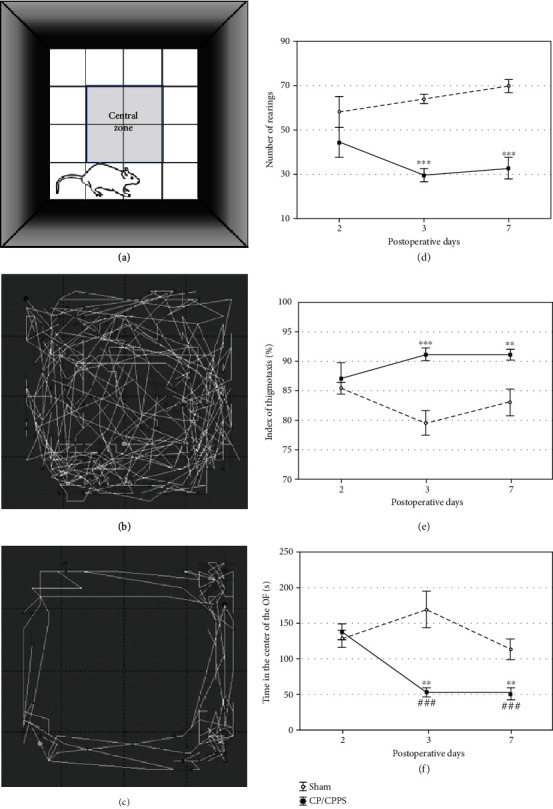Figure 4.

Schematic illustration (a) and representative traces of locomotor activity of animals in the sham group (b) and the CP/CPPS group (c). The number of rearings (d), thigmotaxis index (e), and time spent in the central area (f) in the open field test (OF) registered in sham and CP/CPPS groups. The number of rearings was calculated as the number of times rat has propped on the hind legs. The index of thigmotaxis was defined as a ratio between the distance of ambulatory movement a rat made in the peripheral areas and the total distance of ambulatory movements in the open field test. Values are mean ± SEM. The statistical significance of the difference between the groups was estimated by Student's t-test (∗∗p < 0.01 and ∗∗∗p < 0.001 vs. sham), while within-group differences were estimated by one-way ANOVA with the Tukey-Kramer LSD post hoc test (###p < 0.001 vs. 2 d, n = 6 per group). For details, see the caption of Figure 1.
